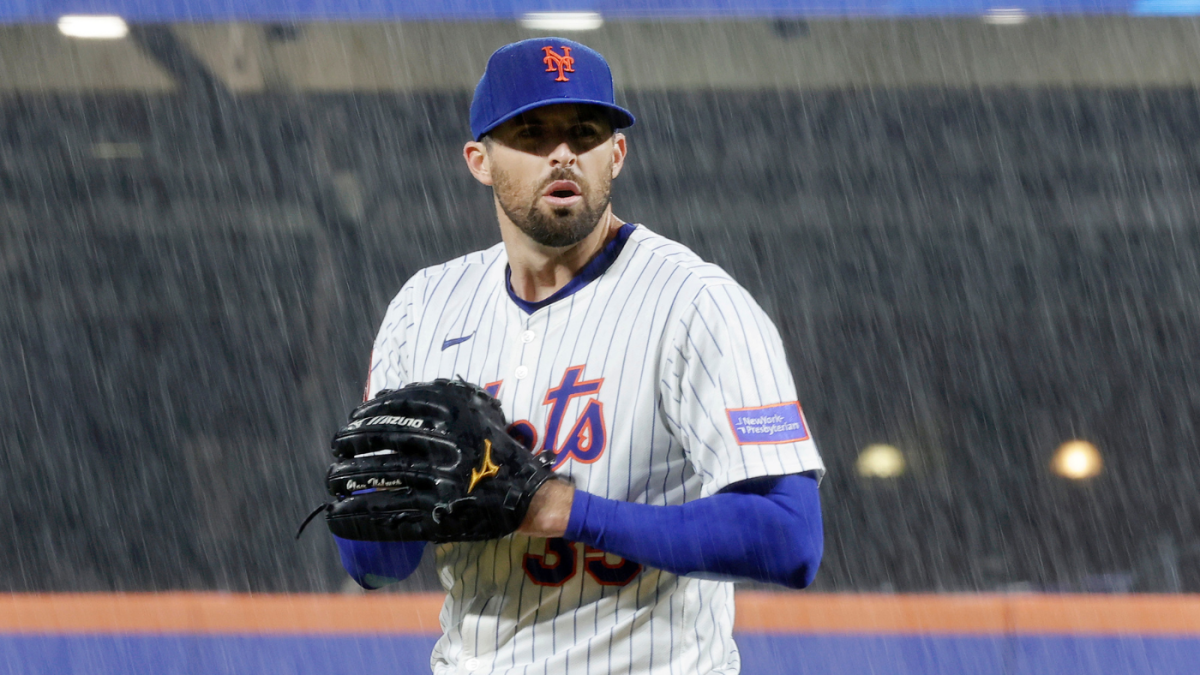Believe it or not, Major League Baseball’s regular season is now nearly two months old. Position players across the league are either nearing or eclipsing 200 plate appearances, while starters across the league prepare for their 10th times through the rotation. To paraphrase Hemingway, the baseball season offers data points in two ways: gradually, then quickly.
With that in mind, this seemed like the perfect time to check in on how some new offerings were faring across the league. Longtime observers know how these things tend to play out. Pitchers will spend the winter forging pitches that receive ample coverage during the exhibition season, when they can play around with those experiments without worrying about the results, and then … well, more often than not, those new toys are placed in a storage unit once the games start to count.
There are exceptions to that rule, however. Scroll slowly with me as I touch on five of them.
Holmes’ return to the starting rotation has been an overwhelming success. Credit that in part to his newly minted kick change — essentially a hybrid pitch that combines the traditional pronged changeup grip with a spiked finger, similar to what you would see on a knuckle curveball. Predictably, the kick change moves almost identically to the sinker, albeit with more drop.


Holmes is using the kick change around 18% of the time overall, placing it second in his bag behind the aforementioned sinker. (That usage rate improves to 25% against left-handed batters.) The early returns on the pitch have been stellar. It has the best whiff (34.8%) and chase rate (40%) in his arsenal, and when opponents have connected, they’re not doing much: his average exit velocity is 85 mph and his average launch angle is 0.7 degrees, meaning a lot of soft, ground-ball contact.
Considering that one of the biggest questions facing Holmes’ reintroduction to the rotation had been how he would fare seeing lefties multiple times in a single outing, his mastery of the kick change has to be one of the biggest player development wins of the seasons.
Luzardo didn’t just change teams over the offseason, he also changed breaking balls. His implementation of a sweeper has been a positive development, and it helps explain why he’s been such a boon for the Phillies rotation.


Historically, Luzardo’s arsenal wanted for glove-side movement. He had his fastballs and a changeup that all broke toward lefty batters, and then a gyro slider that came closest to featuring some cut to it. Otherwise? Lefty batters didn’t have to worry about anything veering away from them, nor did righties have to concern themselves with a pitch boring in. This new sweeper expands his horizons by featuring more than nine inches of glove-side break.
Luzardo’s sweeper has effectively cannibalized his slider usage, and for good reason. He’s sporting a 49% whiff rate on the pitch, as well as a .156 average and .244 slugging percentage. It’s safe to consider this a major success.
Give Leiter a lot of credit: it’s clear that he’s put in the work to better himself after a miserable introduction to the majors last season. He hasn’t been as effective as the Rangers would like him to be — especially since returning from the injured list on account of a blister — but it’s not from a lack of effort or experimentation on his part. That counts for something in my book.


Indeed, Leiter’s arsenal looks significantly different than it did in 2024. He ditched his cutter and added two new pitches to the mix: a sinker and a kick change. For my purposes, I’m focusing on the change, which features more than a foot of additional drop compared to the sinker. Leiter’s changeup has been a bright spot in his arsenal, generating a lot of weak ground-ball contact.
Leiter needs to get a few other aspects of his game right. If he can, expect the changeup to gain more recognition for being a welcomed addition to his arsenal.
Knack’s story is similar to Leiter’s — his overall numbers aren’t where the Dodgers would want them to be, but a newfangled kick change has served as a silver lining — so I’ll keep it brief.


Knack’s cambio has generated an arsenal-best 38% whiffs and 33.8% chases. Opponents are hitting only .154 against the pitch, with a .205 slugging percentage and a 61.9% ground-ball rate. Given that he’s using the pitch nearly a quarter of the time to date, those are impressive marks.
Alas, Knack is still giving up too many home runs, and he hasn’t been as dominant versus left-handed batters as you might think given how well the changeup has performed.
Mize looks well on his way to securing his first All-Star Game appearance. He owes that success partially to a new breaking ball — classified by pitch-labeling models as a slurve.


Mize has used both his slurve and his old slider at least 12% of the time so far this season. The slurve checks in about four mph slower, and with more depth and sweep. Naturally, it’s the slurve that is performing better, too. The pitch is generating 34.9% whiffs (as compared to the slider’s 14.7%) and a 30% chase (versus 12.1%).
Mize almost never throws his slurve within the strike zone, but so far he hasn’t had to. It’s become his top breaking pitch all the same. Considering how ineffective his slider was last season (.287 average and .529 slugging), it’s safe to write that he’s unlocked an upgrade.

